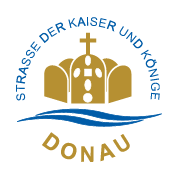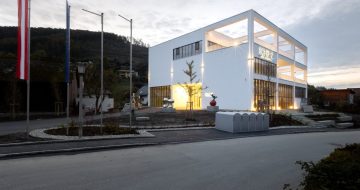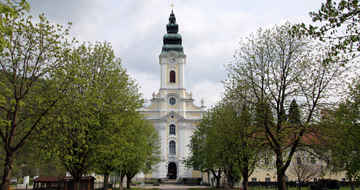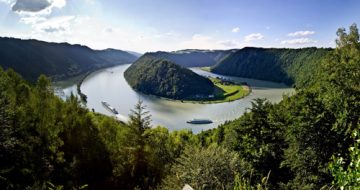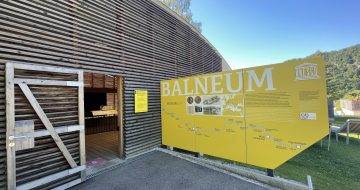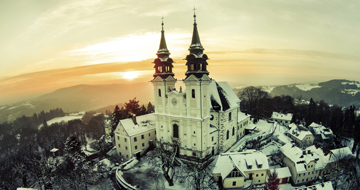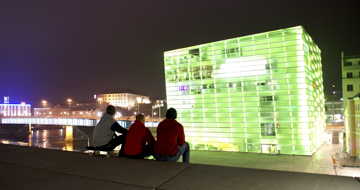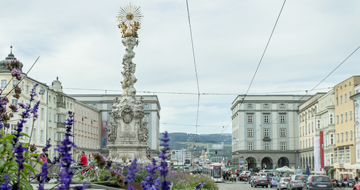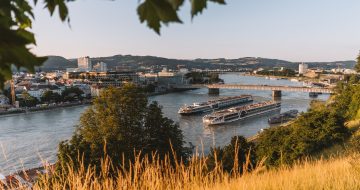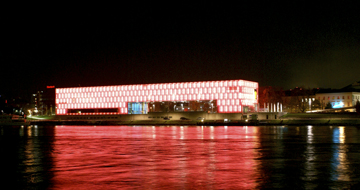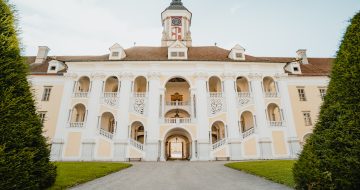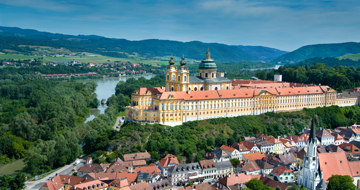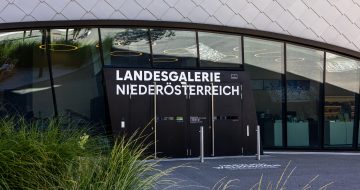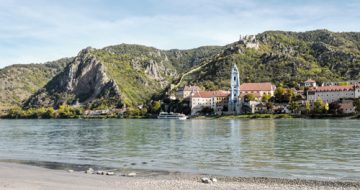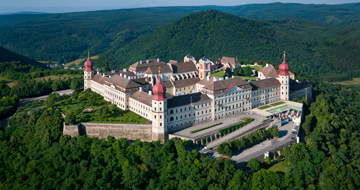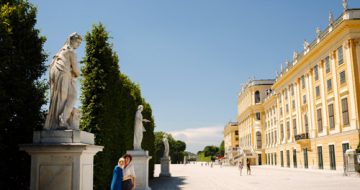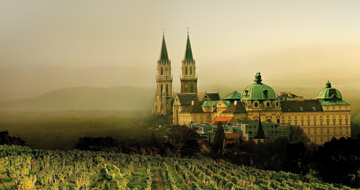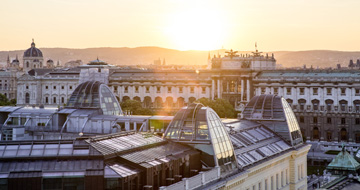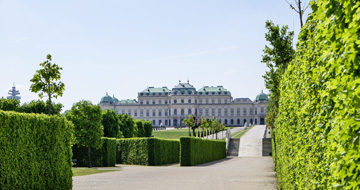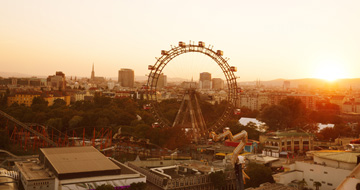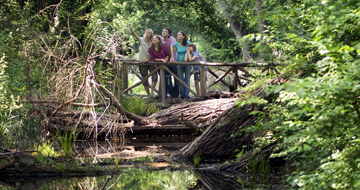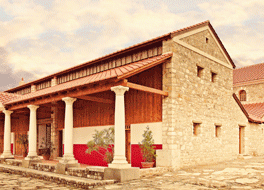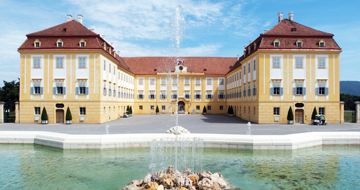Danube Austria
The Austrian Danube
Danube Upper Austria
Hardly any region is as varied as the Upper Austrian Danube region. Numerous, very different landscapes range from the historic bishop's city of Passau to the modern cultural city of Linz to Grein, the pearl of the Strudengau, and offer breathtaking insights and views of a fabulously beautiful country. Baroque monasteries and castles characterize the Danube just as much as castles and ruins from the Middle Ages and picturesque towns with history. With its historic city center and charming location on the three rivers Danube, Inn and Ilz, Passau is a first highlight. Nestled in the "Donauleiten", towering, forested banks, the river makes its way eastward. The first prominent waypoint is the Trappist monastery of Engelszell Abbey, known above all for its liqueur production. A breathtaking natural spectacle is the Schlögener Schlinge. The Danube is forced to make two spectacular changes of direction by the granite primary rock of the Bohemian Massif and shows its most magnificent side at this point. Through the fertile Eferding Basin, the route passes the Cistercian Abbey of Wilhering, whose collegiate church is one of the most magnificent rococo buildings in Austria, and continues towards Linz. In the European Capital of Culture 2009, cultural life pulsates with the interplay of modern art and technology museums, a distinct music scene and the historic old town.
WGD Danube Upper Austria Tourism Ltd.
Lindengasse 9, 4040 Linz
Phone +43 732 7277 888
www.donauregion.at
info@donauregion.at
Linz Tourist Office
Adalbert-Stifter-Platz 2, 4020 Linz
Phone +43 732 7070 2928
www.linztourismus.at
tourist.info@linz.at
Danube Lower Austria
On its 258-kilometer journey through Lower Austria, the Danube passes through highly diverse landscapes from the west: From the Nibelungengau, steeped in history, the river leads into what is probably the most enchanting river valley in Europe: The UNESCO World Heritage Site Wachau is one of Austria's oldest cultural landscapes and stretches from Melk to Krems. The region boasts rich cultural treasures and is an internationally renowned wine-growing region and meeting place for gourmets from all over the world. Also known for its wines are the neighboring Krems Valley and Wagram. Here, a mighty loess step winds its way through the countryside as a striking "landmark" north of the Danube and offers a sublime view. Around the towns of Traismauer, Tulln, Stockerau and Korneuburg stretch the wide plains of the Tulln Danube region, where historical sites and colorful summer theaters entice visitors. Via the imperial city of Vienna, the Danube finally flows into Roman Carnuntum, past baroque Marchfeld castles, the Carnuntum Archaeological Park and the Danube Floodplain National Park. In Lower Austria, too, numerous ground finds and wall remains bear witness to the Roman Limes: in Mautern, the former settlement of "Favianis", in Zeiselmauer, formerly "Cannabiaca" and especially in the area of today's Petronell, where the Roman legionary camp Carnuntum was established around 15 AD.
Danube Lower Austria Tourism GmbH
Schlossgasse 3
3620 Spitz/Danube
Phone +43 2713 30060 60
www.donau.com
urlaub@donau.com
Danube Vienna
Vienna owes its tourist appeal to the exciting combination of imperial, nostalgic flair and a highly creative cultural scene, which boasts the latest trends as well as the responsible preservation of a precious heritage and endearing traditions. The architecture of the Danube monarchy characterizes the impressive appearance of the city. Magnificent buildings from the Baroque, Historicism ("Ringstrasse Style") and Art Nouveau periods, as well as the city's spacious overall layout, make visitors forget that it is the capital of the Republic of Austria, which has only 8.4 million inhabitants, and transport them to a romantic imperial city. It is not only the many buildings from imperial times that make Vienna a city full of beauty and art: world-class museums, collections and works of art can be seen here. These include the Kunsthistorisches Museum, the Belvedere, the Albertina and the Leopold Museum in the Museum Quarter. In addition, sights such as St. Stephen's Cathedral, the Hofburg Palace and Schönbrunn Palace entice visitors to explore the city. Vienna also enjoys an international reputation as a city of music. No other place in the world has been home to so many world-class composers. In addition to those born here, such as Schubert, Strauss and Schoenberg, Vienna was once the chosen home of Mozart, Beethoven and Brahms.
Capuchin Crypt Vienna
Tegetthoffstrasse 2
1010 Vienna
Phone: +43 (0)1-512 68 53-88
info@kapuzinergruft.com
www.kapuzinergruft.com
